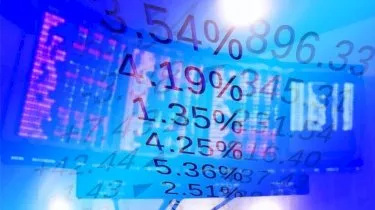Invest
Did fear itself trigger Wall Street plunge?
Investment products with links to the VIX, or fear index, could have “amplified” last week’s market correction, an investment manager has argued.
Did fear itself trigger Wall Street plunge?
Investment products with links to the VIX, or fear index, could have “amplified” last week’s market correction, an investment manager has argued.

CIO at ipac Jeff Rogers has contended that last week’s Wall Street fall was worsened by asset allocation strategies and products with links to the VIX, or fear index, more than any significant re-assessment of fundamental outlook.
The Dow Jones Industrial Average fell 1,175 points last Monday – its largest fall in six years and followed a 666 point fall on the preceding Friday.
The VIX measures the stock market’s predictions of volatility and allows investors, through options, to insure against major share market moves.
As such, as investor uncertainty rises and the share market increases in volatility then the price of insurance option contracts increases, as does the VIC index.

Speaking in an AMP Capital insight, Mr Rogers said, “To be sure, investors are right to be more worried than before about inflationary pressures arising from improved global economic conditions, the associated upward revision on the future path of interest rates and how that in turn impacts the valuation of share markets.
“However, I would suggest that these expectations haven’t changed anywhere near as rapidly as market prices. Investment products linked to the VIX appear to have amplified the recent market adjustment.”
Continuing, he said that assets and strategies without links to the VIX, like fixed income and currency markets, had a more orderly adjustment.
Mr Rogers said that while the VIX was initially designed to measure volatility expectations in the US share market, it now allows investors to bet on volatility’s performance itself through derivative instruments and exchange-traded products.
“This has introduced the possibility of a destabilising feedback loop because there is often a requirement for these funds to quickly sell market exposure in response to a rise in volatility,” he said.
“This action can, in turn, push VIX even higher. That appears to have been the case this past week.”
Yesterday, SPDR rejected criticisms that ETFs (exchange-traded funds) were to blame for the Wall Street fall, urging investors to remember that exchange-traded notes, while a potential culprit, are distinct from ETFs.
The investments products manager at the ASX, Andrew Weaver, said criticisms of ETFs’ role in the sell-off were “doomsday advice” from the active managed sector.
Noting that there was a slight increase in sellers in the ETF sphere over the days of the fall, Mr Weaver said, “The 6 February [trading] was really the only day when there were net sellers when the market was down 3.2 per cent, so even the days when it was sort of less large drops – Monday and the Friday when there was 1.5 per cent an 0.9 per cent respectively – there were net buyers of ETFs on both those days across the board.”

Property
New investment platform Arkus allows Australians to invest in property for just $1
In a groundbreaking move to democratise investment in property-backed mortgage funds, GPS Investment Fund Limited has launched Arkus™, a retail investment platform designed to make investing ...Read more

Property
Help to Buy goes live: What 40,000 new buyers mean for banks, builders and the bottom line
Australia’s Help to Buy has opened, lowering the deposit hurdle to 2 per cent and aiming to support up to 40,000 households over four years. That single policy lever will reverberate through mortgage ...Read more

Property
Australia’s mortgage knife‑fight: investors, first‑home buyers and the new rules of lender competition
The mortgage market is staying hot even as rate relief remains elusive, with investors and first‑home buyers chasing scarce stock and lenders fighting for share on price, speed and digital experienceRead more

Property
Breaking Australia’s three‑property ceiling: the finance‑first playbook for scalable portfolios
Most Australian investors don’t stall at three properties because they run out of ambition — they run out of borrowing capacity. The ceiling is a finance constraint disguised as an asset problem. The ...Read more

Property
Gen Z's secret weapon: Why their homebuying spree could flip Australia's housing market
A surprising share of younger Australians are preparing to buy despite affordability headwinds. One in three Gen Z Australians intend to purchase within a few years and 32 per cent say escaping rent ...Read more

Property
Tasmania’s pet-positive pivot: What landlords, BTR operators and insurers need to do now
Tasmania will soon require landlords to allow pets unless they can prove a valid reason to refuse. This is more than a tenancy tweak; it is a structural signal that the balance of power in rental ...Read more

Property
NSW underquoting crackdown: the compliance reset creating both cost and competitive edge
NSW is moving to sharply increase penalties for misleading price guides, including fines linked to agent commissions and maximum penalties up to $110,000. Behind the headlines sits a more ...Read more

Property
ANZ’s mortgage growth, profit slump: why volume without margin won’t pay the dividends
ANZ lifted home-lending volumes, yet profits fell under the weight of regulatory and restructuring costs—an object lesson in the futility of growth that doesn’t convert to margin and productivityRead more

Property
New investment platform Arkus allows Australians to invest in property for just $1
In a groundbreaking move to democratise investment in property-backed mortgage funds, GPS Investment Fund Limited has launched Arkus™, a retail investment platform designed to make investing ...Read more

Property
Help to Buy goes live: What 40,000 new buyers mean for banks, builders and the bottom line
Australia’s Help to Buy has opened, lowering the deposit hurdle to 2 per cent and aiming to support up to 40,000 households over four years. That single policy lever will reverberate through mortgage ...Read more

Property
Australia’s mortgage knife‑fight: investors, first‑home buyers and the new rules of lender competition
The mortgage market is staying hot even as rate relief remains elusive, with investors and first‑home buyers chasing scarce stock and lenders fighting for share on price, speed and digital experienceRead more

Property
Breaking Australia’s three‑property ceiling: the finance‑first playbook for scalable portfolios
Most Australian investors don’t stall at three properties because they run out of ambition — they run out of borrowing capacity. The ceiling is a finance constraint disguised as an asset problem. The ...Read more

Property
Gen Z's secret weapon: Why their homebuying spree could flip Australia's housing market
A surprising share of younger Australians are preparing to buy despite affordability headwinds. One in three Gen Z Australians intend to purchase within a few years and 32 per cent say escaping rent ...Read more

Property
Tasmania’s pet-positive pivot: What landlords, BTR operators and insurers need to do now
Tasmania will soon require landlords to allow pets unless they can prove a valid reason to refuse. This is more than a tenancy tweak; it is a structural signal that the balance of power in rental ...Read more

Property
NSW underquoting crackdown: the compliance reset creating both cost and competitive edge
NSW is moving to sharply increase penalties for misleading price guides, including fines linked to agent commissions and maximum penalties up to $110,000. Behind the headlines sits a more ...Read more

Property
ANZ’s mortgage growth, profit slump: why volume without margin won’t pay the dividends
ANZ lifted home-lending volumes, yet profits fell under the weight of regulatory and restructuring costs—an object lesson in the futility of growth that doesn’t convert to margin and productivityRead more








